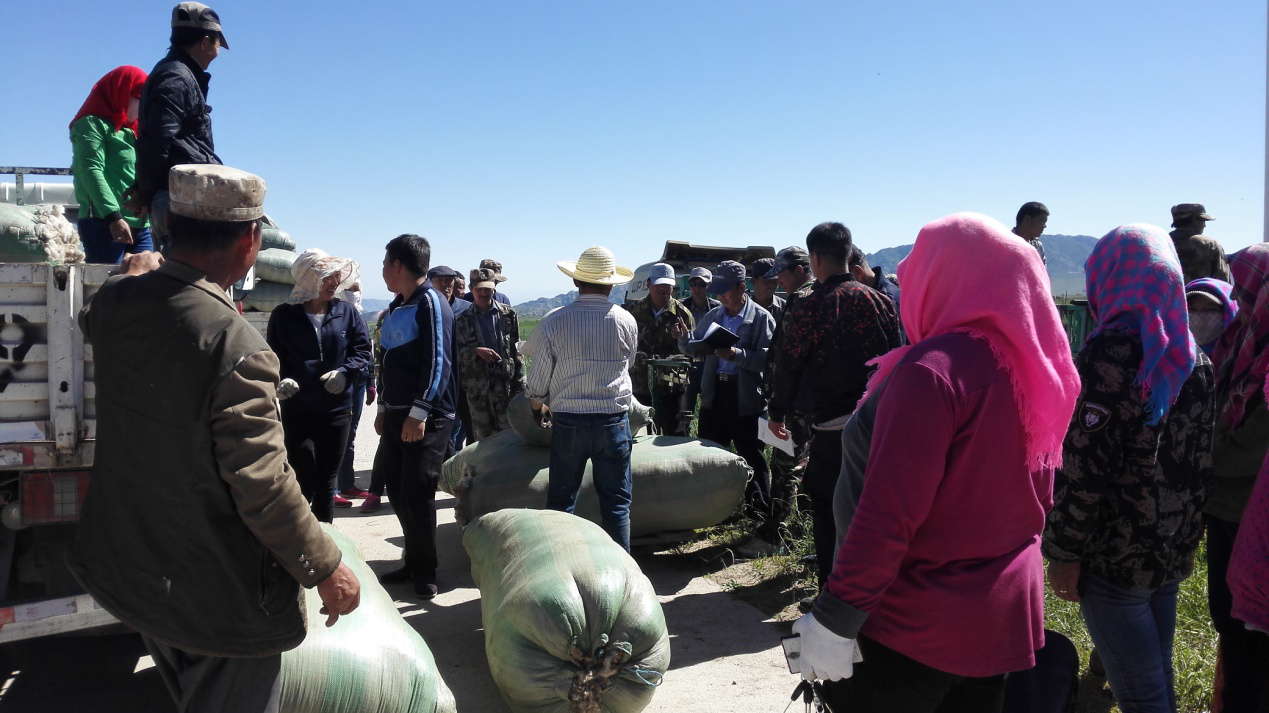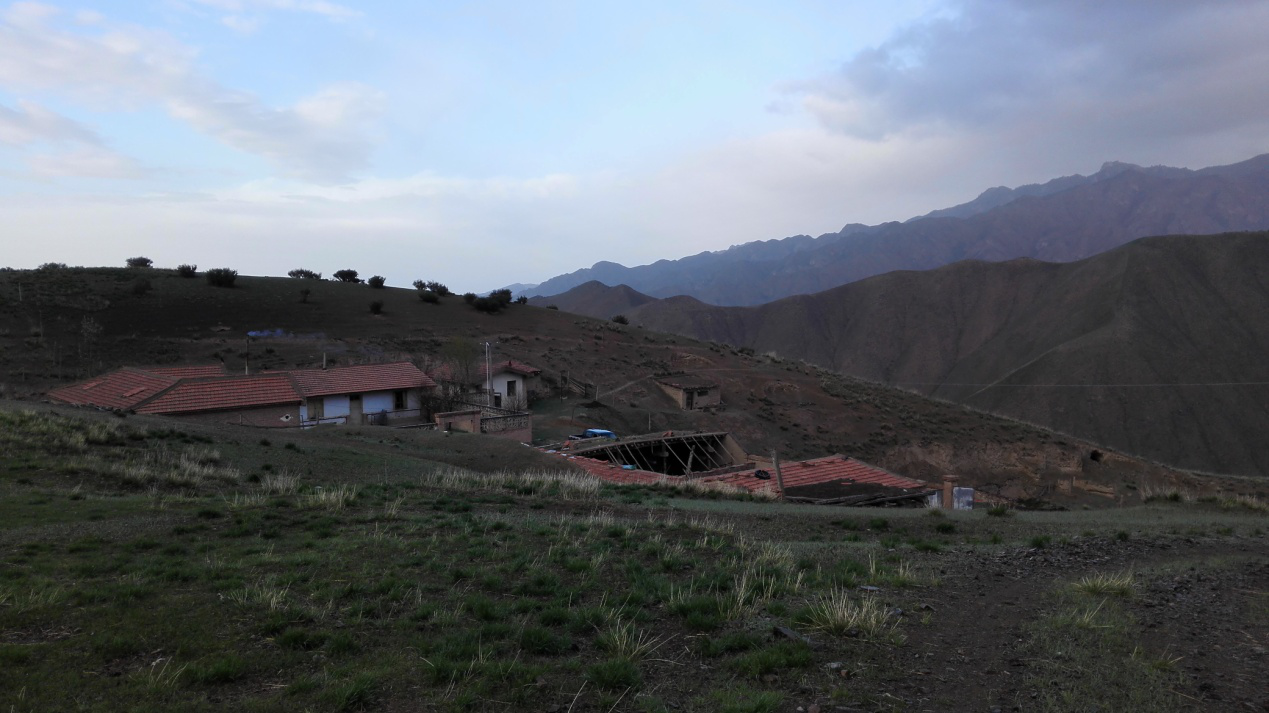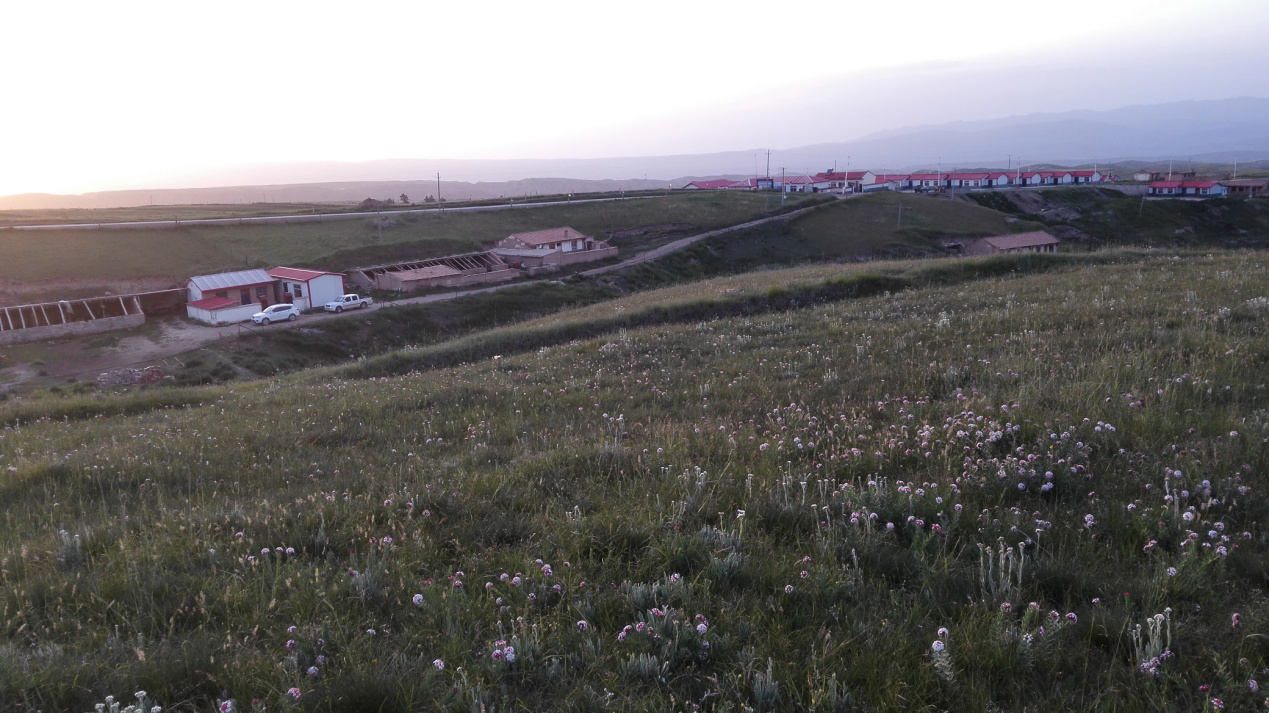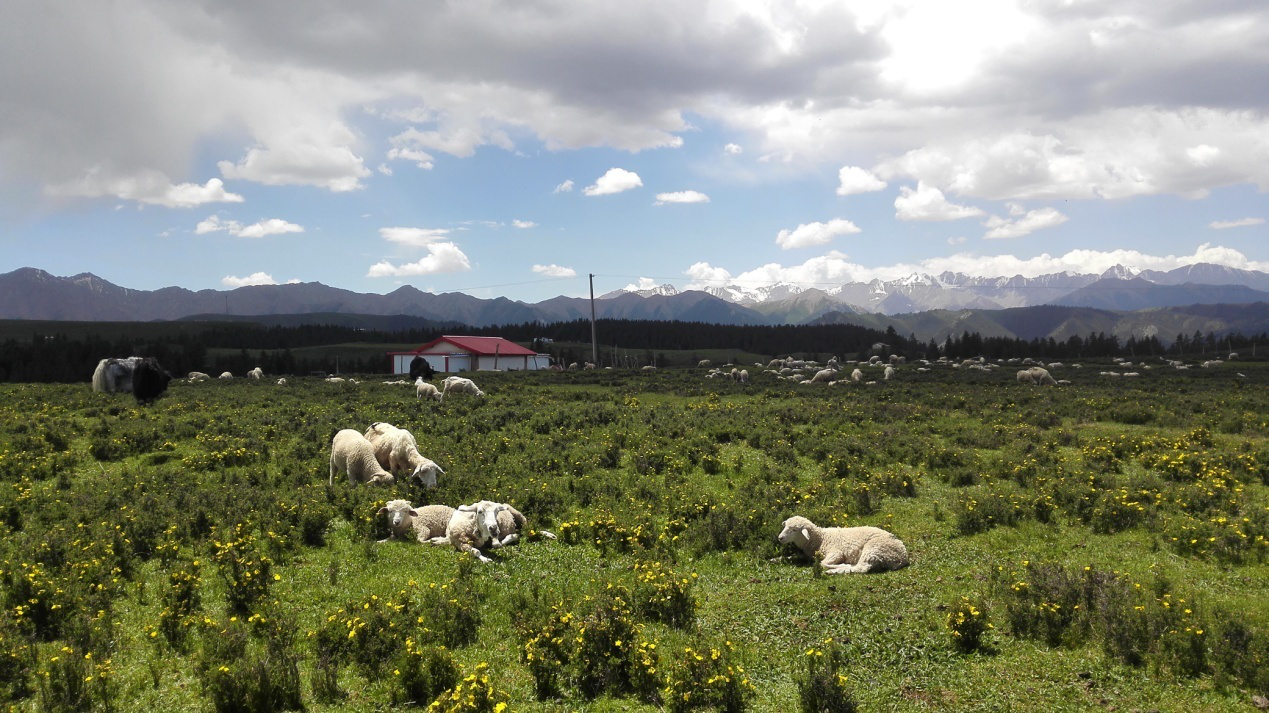 Case Studies of Targeted Poverty Reduction and Alleviation in 100 Villages
From Family to Village: Poverty Alleviation Experience of a Poor Pastoral Village in China
Case Studies of Targeted Poverty Reduction and Alleviation in 100 Villages
From Family to Village: Poverty Alleviation Experience of a Poor Pastoral Village in China

Challenges
Since 2006, China started to subsidize herdsmen in Saiding village for the purpose of ecological protection. And in 2017, the construction of Qilian Mountain National Park has brought greater changes to Saiding village which is located in the hinterland of Qilian Mountain, and the most influential policy is grazing prohibition.
Since the Grassland Law of the people's Republic of China in 1985, China has established a system of grazing prohibition, suspension and rotation in areas with serious ecological damage, ecologically fragile areas and ecologically critical areas, and provided forage and financial subsidies to herdsmen who implement grass and livestock balance and rear livestock in pens in areas with grazing prohibition, suspension and rotation.
As a cadre working in Saiding village in China, observed, “most young people born in and after the 1980s have not stayed in the village anymore. For young people, grazing prohibition has little impact on their life, because they can get a subsidy for grazing prohibition. The older generation, face big challenges, having few working skills beyond farming, how to earn their livings is a big problem.”
Challenge 1: The risk of livelihood transformation caused by policy changes. For example, after grazing prohibition and relocation, how to accommodate new context and ensure income?
Challenge 2: The lack of means of production. Families with small grassland can only keep a small number of livestock which is hard to ensure or increase family income; they have to pay a big amount of cash for keeping certain number of livestock to ensure family income, or expanding the number of livestock to increase family income.
Challenge 3: Severe disease brings a heavy burden to the family economy. In Saiding village, Although the family can get reimbursement from different kinds of poverty alleviation subsidies, the family still need to pay for about 60% of the total expenditure.
Towards a Solution
The concept of "targeted poverty alleviation" was put forward for the first time in 2013 by Xi Jinping, the President of the People’s Republic of China. The State formulates a unified method for identifying poverty alleviation objects; On the basis of existing work, all provinces (and autonomous regions, municipalities directly under the central government) adhere to the effective connection between poverty alleviation and development and the rural minimum living security system, establish files and cards for each poor village and poor household and build a national poverty alleviation information network system in accordance with the principles of County as unit, scale control, hierarchical responsibility, accurate identification and dynamic management; The special poverty alleviation measures should be linked with the poverty identification results, deeply analyze the causes of poverty, formulate assistance measures village by village and household by household, focus on earnestly support the real poverty and poverty alleviation, ensure the goal of building a well-off society in an all-round way by 2020, and let the majority of poor people share the fruits of national development.
This “targeted poverty alleviation mechanism” was later simplified as “six precisions” in implementation, including: “precise supporting objects” which means that the poverty alleviation targets should be accurate, “precise project arrangement” which means that the project design and implementation should be adjusted to local conditions precisely, “precise use of funds” which means that poverty alleviation funds are used effectively and rightly, “precise measures to support households” which means that the poverty alleviation programs and measures are formulated according to the actual situation of poor households, “precise dispatch of personnel to villages” which means that the dispatch of poverty alleviation cadres from superior departments to villages should adapt to villages’ real personnel need, and “precise effectiveness of poverty alleviation” which means that identified poor villages and poor households should be all out of poverty..Poor families in Saiding village actually benefited from these, especially from:
Solution 1: precise measures to support households. In Saiding village, 19 households were identified as poor families in 2013, 7 households by the end of 2014, only 2 households by the end of 2016, and all of them were lifted out of poverty in 2018. All these identified poor families have got different levels of poverty assistance according to the “six precisions”. Taking one family as example, this family received 3,000 yuan civil affairs temporary assistance, 12,500 yuan subsidy for house reconstruction, 17 ewes for family livelihood development, 28 square meters of color steel houses, 50,000 yuan of interest discount loan for targeted poverty alleviation, 11,500 yuan of grassland protection subsidy and 6,100 yuan of rural minimum living allowance in 2015; 20 sheep and 6,100 yuan of rural minimum living allowance in 2016; 6,100 yuan of rural minimum living allowance in 2017. When being removed from the list of poor households at the end of 2017, the annual per capita net income of Wang’s family was 9,625 yuan.
Solution 2: precise project arrangement for poverty alleviation in the whole village. A survey in 2017 showed that 37 of the 61 interviewed households said they had directly benefited from the poverty alleviation policy: new roads (60 kilometers) constructed in the village; 108 new water reservoirs (pits) built with 80 beneficiaries; reconstruction of 6 village power grid transformation benefiting 74 households; reconstruction of 4 dilapidated houses and improvement of the living environment for 46 households; support of two characteristic industries benefiting 10 households; formation of 1 rural cooperative benefiting 10 households; support of 2 rural tourism agritainment households with a total investment of 700,000 yuan; 24 villagers participated in health and family planning related training; all 121 households in the village had access to radio and television; 1 newly built cultural and leisure center; 100% coverage of mobile phone signal.These projects were mainly funded by special funds of poverty alleviation, which in accordance with relevant policies at the national level, and the corresponding implementation measures formulated by local authorities based on local actual situation, come from the general public budget arrangements of the central, provincial, municipal and county governments, and are mainly used for the poverty alleviation of identified poor villages and poor households. And also integrating counterpart assistance resources from various industrial departments of county-level governments. Villagers said that “the infrastructure construction such as water, electricity, reconstruction of dilapidated houses and roads have brought about great changes to the village.” Village and town cadres believed that “the first step of the real poverty alleviation should be to improve the infrastructure. A good environment can stimulate poor households to find ways to get out of poverty;”
The logic of poverty alleviation for the identified poor villages is to take the village as a development community, which is not only the grass-roots unit of the national administrative system, but also a geographical social organization with individual families as the basic unit. The attribute of village as a local community is mainly reflected in three aspects: the first is the emotional attribute, which means that village provides the basis for emotional identity of individual villagers; the second is the functional attribute, which means that the village needs to provide support for villagers and families to resist social risks village as an unified social support system; the third is the institutional attribute which means that the development of villages follows different institutional logic, such as clan, elders, administration, etc. villagers are both practitioners and constructors of the system. However, in the process of modernization, the community attribute of villages is gradually weakening.
Saiding village is identified as a poor village. Poverty alleviation resources not only benefit the identified poor households, but also benefit the whole village. In particular, a series of infrastructure construction have brought great changes to the village. Taking the opportunity of poverty alleviation, the village attribute is gradually rebuilt in the process of participation of all parties. The function of the village as a local support system has been strengthened to some extent, which is also the focus of poverty alleviation.
The national action of poverty eradication governance formed basic support for the family’s poverty alleviation action by means of poverty alleviation policies precisely targeting both households and the whole village; On the other hand, as a basic unit of action, the family showed a high degree of agency and self-adjustment to various changes in the process of national and social development. The referential meaning of Saiding village to South-South countries is mainly reflected in the following two aspects:
Experience 1: poverty alleviation resources benefit the whole village. In order to help Saiding village get rid of poverty, the town government has established a leading group for targeted poverty alleviation in Saiding village, which is composed of municipal and county leaders, responsible departments and rural cadres. It is responsible for organizing meetings with rural cadres and villagers, and formulating the targeted poverty alleviation plan for Saiding village. This plan focuses on the five aspects of infrastructure reconstruction, industrial cultivation, public service guarantee, village appearance improvement and ability improvement of villagers, including 14 village construction projects to solve the bottlenecks problems restricting the village development, such as water, electricity, road and housing, and promote e-commerce, ecotourism, local characteristic products and other industries which can increase villagers’ income.
Experience 2: poverty alleviation assistance is targeted to households. For the seven families identified as poor households in 2015, Saiding village has established an assistance team mainly comprising of township leaders, temporary cadres from superior government department and village cadres of college student as the team members. The team cooperates with the village cadres and village group leaders to carry out assistance according to the different conditions of each poor household, which includes: coordinating project funds or loans for those with labor ability and guiding them to develop characteristic industries for income increasing; helping to improve family infrastructure for those who lose their ability to work due to illness or disability, and provide the social security of civil minimum living standard, medical assistance and social assistance according to related social security policies so that their basic life can be effectively guaranteed; coordinating student loans and social assistance for families who become poor mainly because of university education, and providing skills training to improve their ability to increase income.
Contact Information
Countries involved
Supported by
Implementing Entities
Project Status
Project Period
Primary SDG
Similar Solutions
| NAME OF SOLUTION | Countries | SDG | Project Status | |
|---|---|---|---|---|
Accessibility of Financial Services and the Private Sector in Africa Maximizing the impact of financial cooperation on economic development and industrialization in Africa |
China | 08 - Decent Work and Economic Growth | Completed | View Details |
ADAPT PLAN in Malawi |
China | 01 - No Poverty 05 - Gender Equality 11 - Sustainable Cities and Communities | Ongoing | View Details |
Addressing Racial and Ethnicity-based Discrimination and Strengthening the Protection of Rural Afro-descendants UNFPA supports data disaggregation as a tool to fight racism and ethnic discrimination |
China | 01 - No Poverty 02 - Zero Hunger 03 - Good Health and Well-being 05 - Gender Equality 06 - Clean Water and Sanitation 11 - Sustainable Cities and Communities 16 - Peace and Justice Strong Institutions | Ongoing | View Details |
Advanced International Training Programme on Municipal Finance and Local Democracy across Five African Countries Pioneering the proof of concept that greater impact in capacity development for local governments requires a hybrid of methodologies to unlock resource flows |
China | 01 - No Poverty | Ongoing | View Details |
Affordable Prefabricated Housing for Everyone China assists Liberia to facilitate sustainable infrastructure development |
China | 01 - No Poverty 09 - Industry, Innovation and Infrastructure | Completed | View Details |



